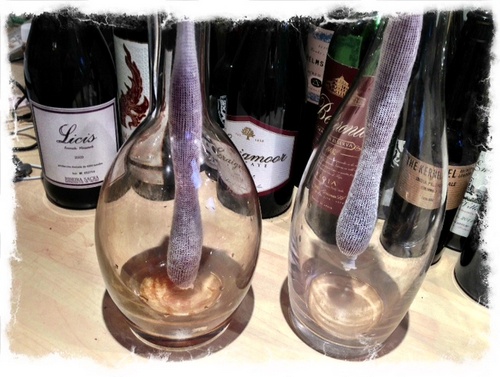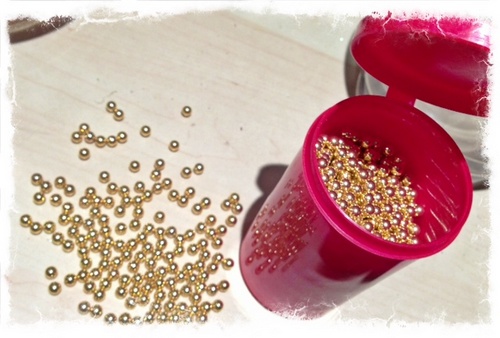I love decanting red wines. And some whites. But I have always struggled with cleaning decanters properly.
My usual technique is to was then in very hot water several times, and then leave them to drain. But they never seem to drain completely, and then some water always seems to condense in them, no matter how hot they are – it never seems to evaporate properly. And I don’t like to leave decanters with a few drops of water in the bottom when I store them.
There’s also the problem of removing red wine stains from them.
I have just discovered two solutions to these problems. The first is solved by a nifty product from Around Wine, called decanter drier crystals. These silica crystals are blue when dry, red when wet. You dry them in the microwave (or conventional oven), then suspend them in the neck of a drained, washed decanter. They absorb the moisture and the decanter dries properly. You can then recharge them in the microwave to use again.
The second problem is solved by using either rice, or BB gun pellets (made from stainless steel, and cheaply available on Ebay). These, with a bit of water, can abrade the most stubborn red wine stains from a decanter.
Both these solutions make me more willing to use decanters for all the wines I serve. A good thing.
12 Comments on Washing, drying and maintaining a decanter




Your ball bearings are bling.
Jamie, there are some excellent cleaning products out there that really power off red wine pigments. The one I like best for home use is One-Step, an oxidising detergent sold for home beer and winemaking. Hot water, One-Step, let it soak for an hour, pour most of the solution out, stuff a dishcloth into the decanter (making sure there is enough liquid to soak it completely with a half-cup of extra to slosh about), swirl vigorously to move the cloth around the inside, and that’s it–a good rinse and dry and they’re like new on the inside.
Good thing, given the amount of work my decanters see . . .
Dried beans, lentils or rice (in decending order) are the everyday option for me. The decanter crystals do look a bit like an artisan chorizo and I’ve got to agree about your golden balls, bling, nice!
Jamie,
I’d be a bit wary of using the drying crystals near drink/food items, even if they don’t contact the surfaces. The blue/pink indicator is cobalt chloride which is reasonably toxic. Even in chemistry labs we’re moving toward a different indicator (orange/colourless) to limit toxic exposure.
This is a minor point, and I’d consider the risk minimal but it’s worth mentioning
If Around Wine confirm the indicator used in non-cobalt based then I retract all of the above in the blink of an eye.
LOL, those pellets are also great for finding any weaknesses in the glass wall of the decanter. A few hundred ball bearings bouncing around the kitchen, into the dishwasher and tonight’s dinner makes for fun times.
A simple bleach solution is by far the best stain remover and leaves no trace with adequate rinsing.
Many wines are better decanted but I would except young and middle aged red Burgundy.
Hi Jamie Milton sterilizing tablets for baby bottles work a treat for getting rid of wine stains, and as far as I’ve found leave no after taste at all.
@ Tom: not to go off-topic but what is your reasoning on not decanting young-to-mid-aged Burgundies?
The amount of Cobalt Dichloride used in the Decanter Driers is less than 0.5 per cent of total volume and the blue colour is ‘fixed’ in the inert silica gel. We are advised that even the people filling the gauze tubes for us (and therefore using it in bulk exposure) are not required to take any health or safety precautions.
How do you clean a decanter which has fine wide spidery marks on the inside?
Go on ebay and search ‘decanter cleaners’. Look for ‘2 x Brushtech B55C The one Brush For All Glassware….”. £5.99 for the pair. Got mine in the post yesterday. It fits the narrow neck of my secondhand bulb decanter and has removed the spidery marks which it was afflicted with. I’m very pleased as I was getting ready to dump the offending piece of glass!!
Hi Bernard Portis,
You shared the outstanding information about the wine decanters,But if you want to pouring (decanting) the contents from one vessel (typically a bottle) into another vessel by using wine aerator because these oxygenate the wine as it passes through the narrow tube drawing in air through a clever, then you must read all the procedure carefully are mentioned in the above information which provide you the best way of cleaning and transfer of material easily without wastage of material and time .
Thanks .